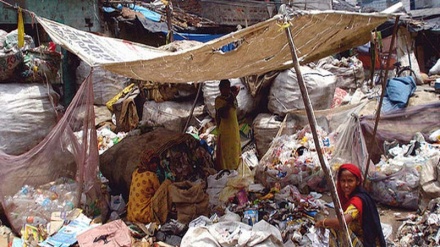We only have one planet to live on (8)
Today, we study the international measures which have taken place to protect wetlands, especially Ramsar Convention. Do stay with us.
The industrial revolution and the tendency toward progress and development changed the life of mankind to an extent that the topic of environment and limitation of natural sources was completely forgotten. However, in the late 1960s, Rachel Carson, in her book, Silent Spring, depicted an image of the state of environment in the US in that period of time. Although in her book, she only referred to the impacts of poisons used against plant blights and the ensuing dangers of their usage, her book compelled the enthusiasts in the environment to contemplate over this issue of concern. Thereafter, many individuals developed an interest in the topic of environment, while others made efforts to repair the damages which had been inflicted. In this realm, discussions on the environment took place throughout many international circles, leading to formation of the first international treaty on the issue of environment. These treaties were about wetlands and the then Iranian government founded this convention.
The Ramsar Convention on Wetlands is the oldest international convention which puts emphasis on protection of the environment round the world. The related meeting was held in the city of Ramsar on February 2, 1971. This convention was shortly referred to as Wetlands Convention. But, it is usually known as Ramsar Convention. After this round of meetings, a document was presented which included a number of recommendations to governments on protection of important wetlands. Generally speaking, conventions are initially in the form of proposed plans, and the initial participation of countries in each plan takes place voluntarily. However, if the number of member states would go beyond a specific boundary, this proposal turns into a binding instruction. This trend also existed in regard to Ramsar Convention. In the waning months of the year 1975, when the then Greek government, upon the signature of Ramsar Convention, joined this convention, the convention became binding. This convention is headquartered in Switzerland.
This convention binds all member states to determine and protect important international wetlands and encourages them to prudently use them. According to figures released in 2008, more than 1700 sites, covering an area of 160 million hectares, worldwide, have been registered in this convention. This convention puts emphasis on logical protection and utilization of wetlands, especially in regard to creation of an important habitat for water birds. Meanwhile, throughout the years, the scope of outlook of this convention has expanded and has covered all of the aspects of protection and utilization of wetlands. The Ramsar Convention includes wetlands among ecosystems, which are of paramount importance in biodiversity and human community welfare.
Ramsar Convention maintains a prelude and twelve articles. This convention provides a means, based on which governments can consult over, and participate in protection of their wetlands. For instance, governments can take loans from a fund which has been launched at the UN for this convention, or make use of the other member states’ experiences. In this convention, a list of the important wetlands in the world has also been prepared. The parties to this convention are also duty-bound to determine the important wetlands of their territories and to facilitate the appropriate protection and utilization of their wetlands. Also, via an appropriate management, they should make every effort to increase the number of water birds in their wetlands.
The list, which names the important wetlands, worldwide, is referred to as Ramsar List or Site. Selection of a wetland for registration in Ramsar Site maintains a number of conditions. The wetland should maintain a particular ecological, botanical, and hydrological status and position. For instance, it should be a representative of a rare and extraordinary ecosystem, or should maintain an especial value for the survival of a region’s biodiversity. Meanwhile, the size of wetlands is not important as such in their registration in Ramsar List. Some wetlands cover several thousand hectares, but have not been registered in this site, while some other wetlands that only cover a thousand square meters have been enlisted in the Ramsar Site. Hence, what is important is the impact of wetland on the region and its importance in the regional ecosystem. Meanwhile, if some of the registered wetlands are endangered due to a number of conditions, such as inappropriate usage, war, environmental catastrophes, or drought, they are enlisted in Montreux Record .Ramsar Convention Office urges member states to financially and scientifically assist countries which are home to endangered wetlands, to prevent their destruction.
Although Ramsar Convention has made a number of significant achievements in protection of wetlands, many wetlands around the world are on the verge of destruction. The Secretary General of Ramsar Convention, Christopher Briggs, in his remarks throughout the 12th round of meetings of the member states to this convention, reported on the destruction of 1% of the world’s wetlands.
In order to attain the goals of Ramsar Convention, it is necessary for all world countries to resolutely follow up on all environmental agreements, treaties, rules and conventions within the framework of a global cooperation. Meanwhile, the measures taken by non-governmental organizations to alert people and countries on the management and protection of the remaining wetlands in the world can be highly effective. It is necessary for all projects which are implemented in different parts of the world to be in line with protection and survival of the environment.
MR/ME


